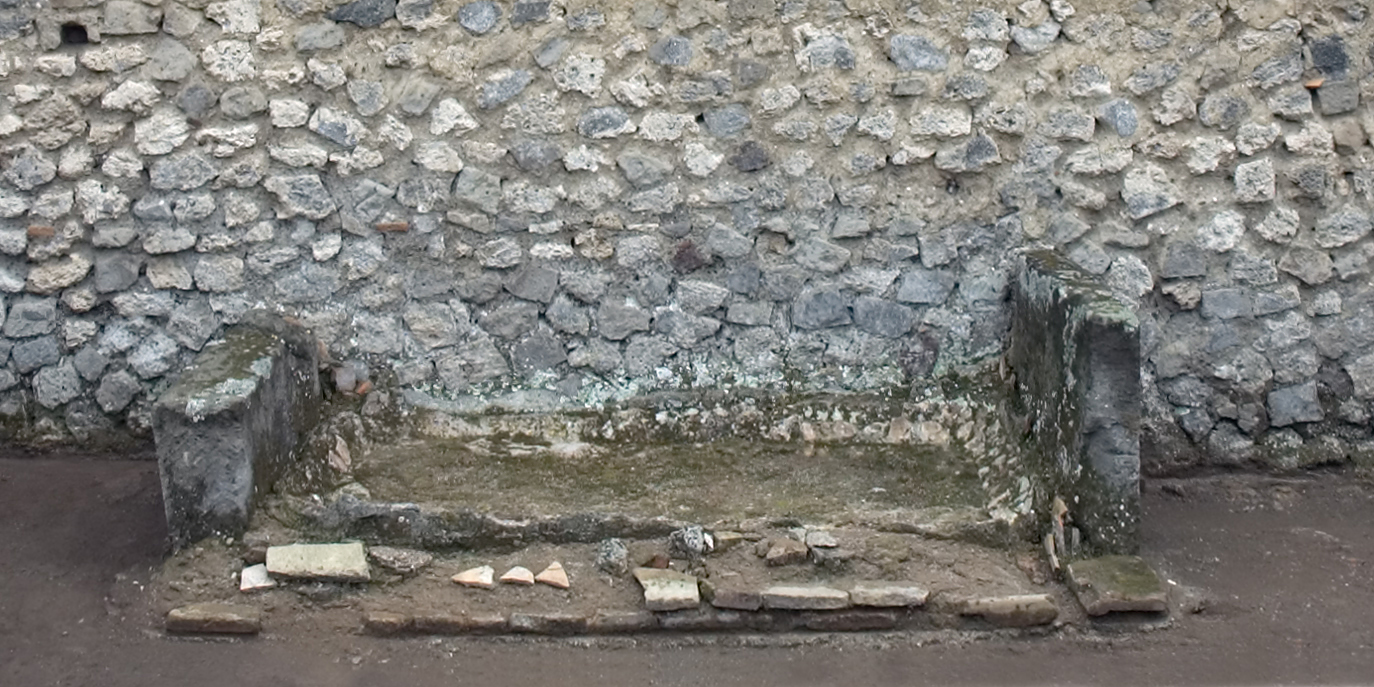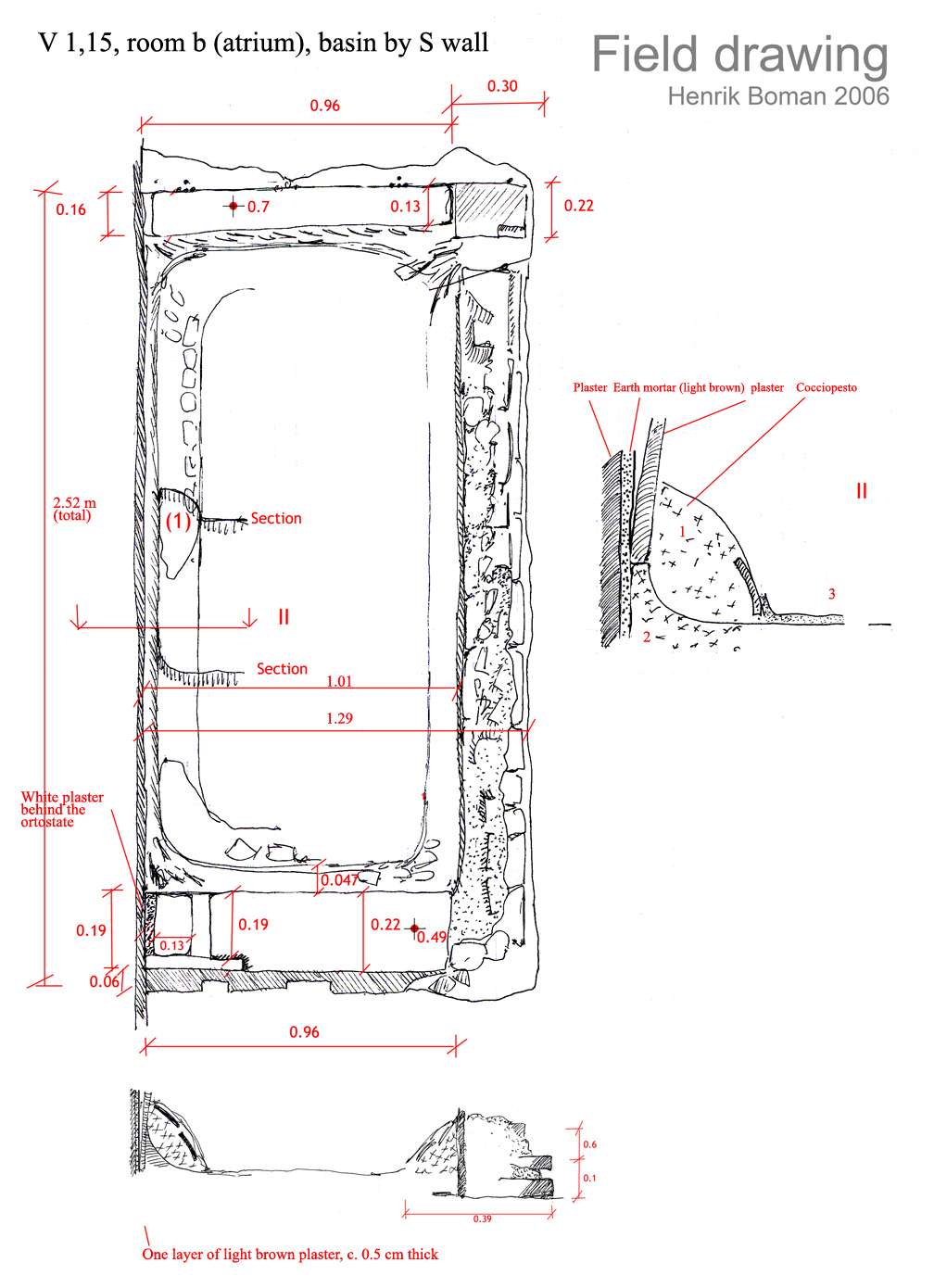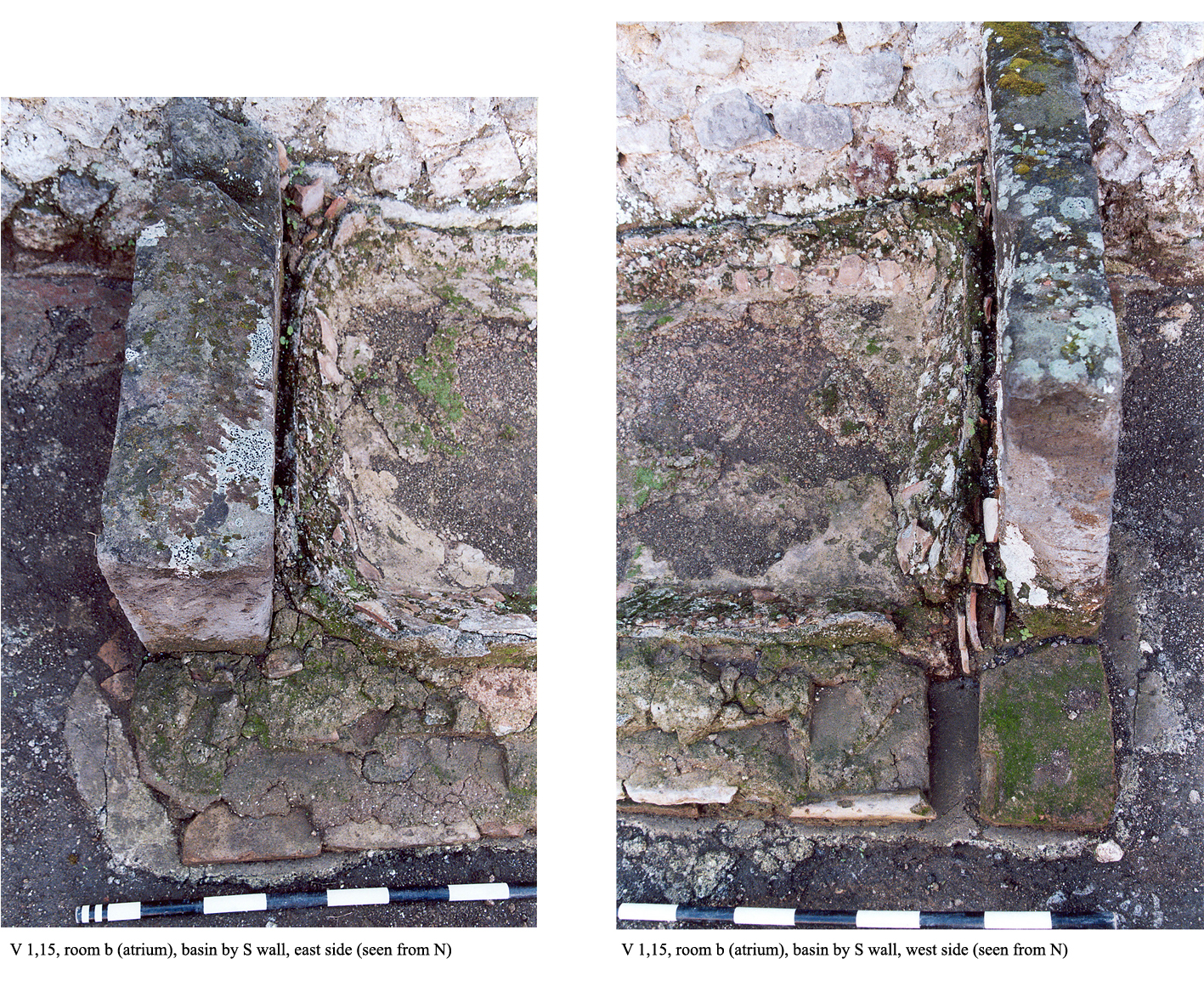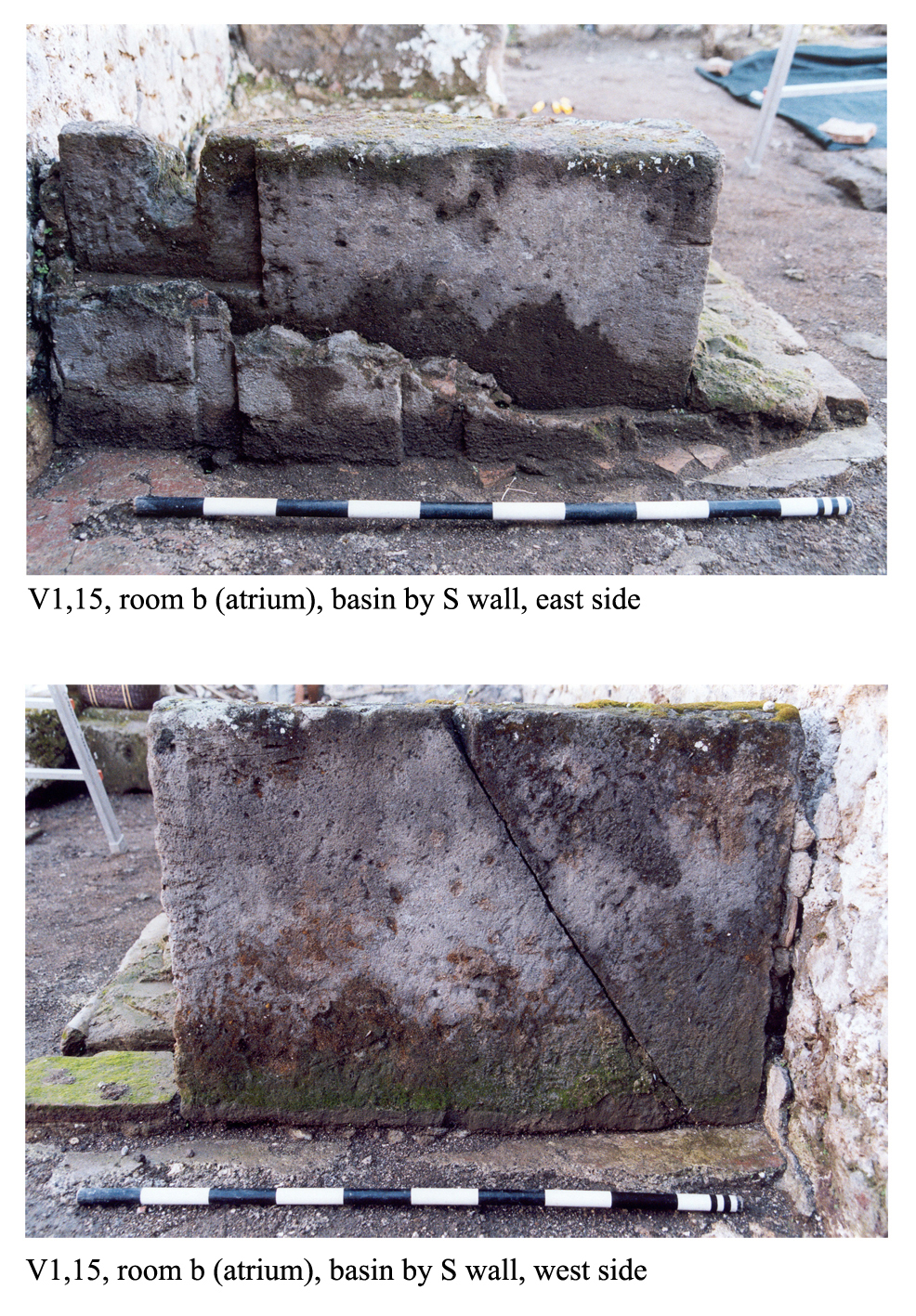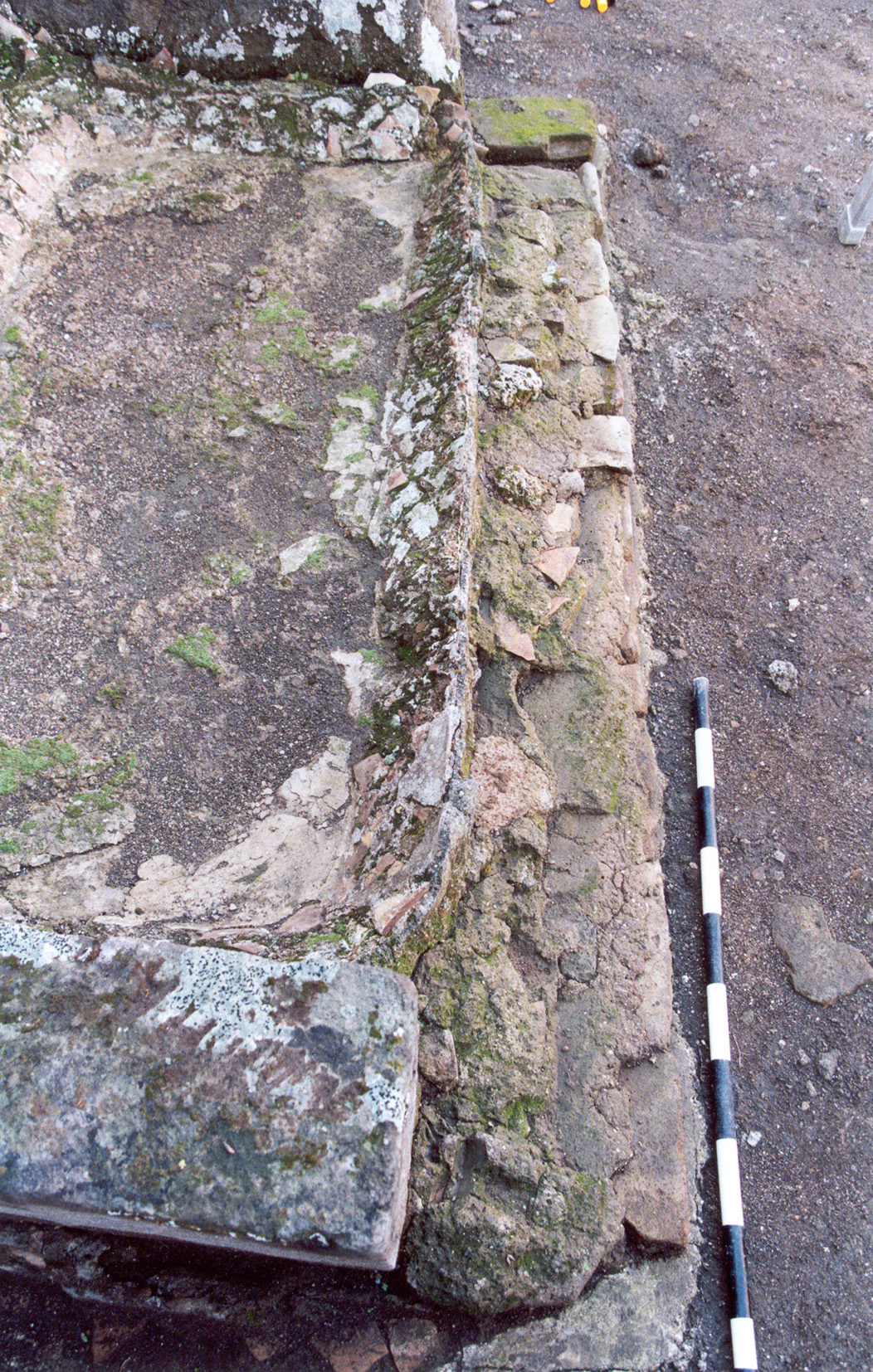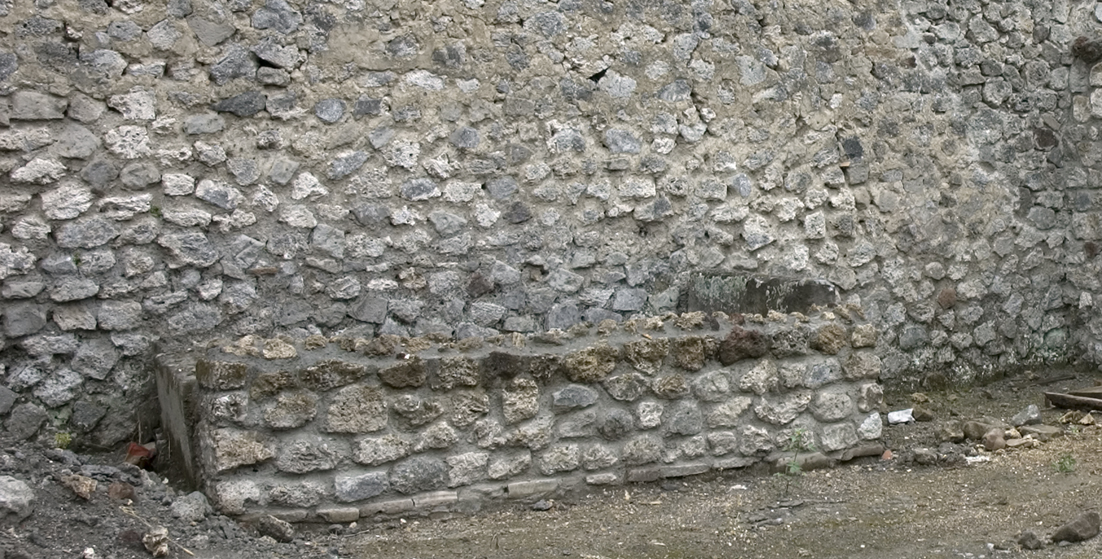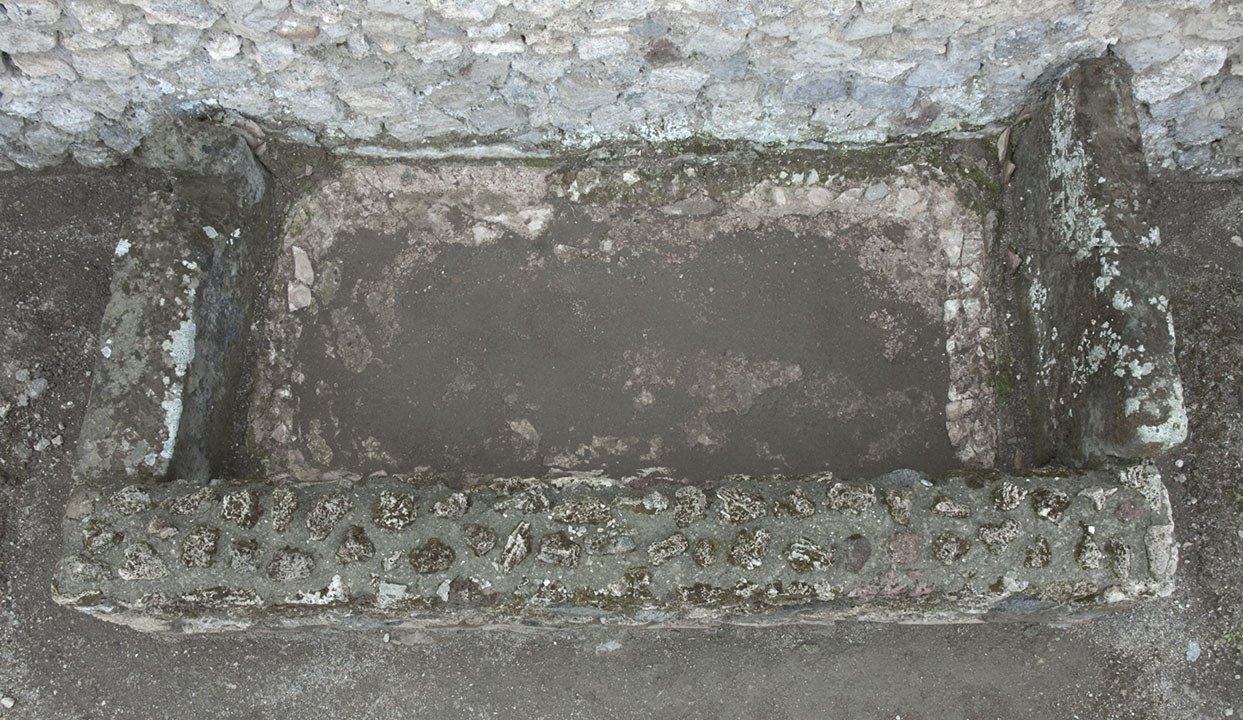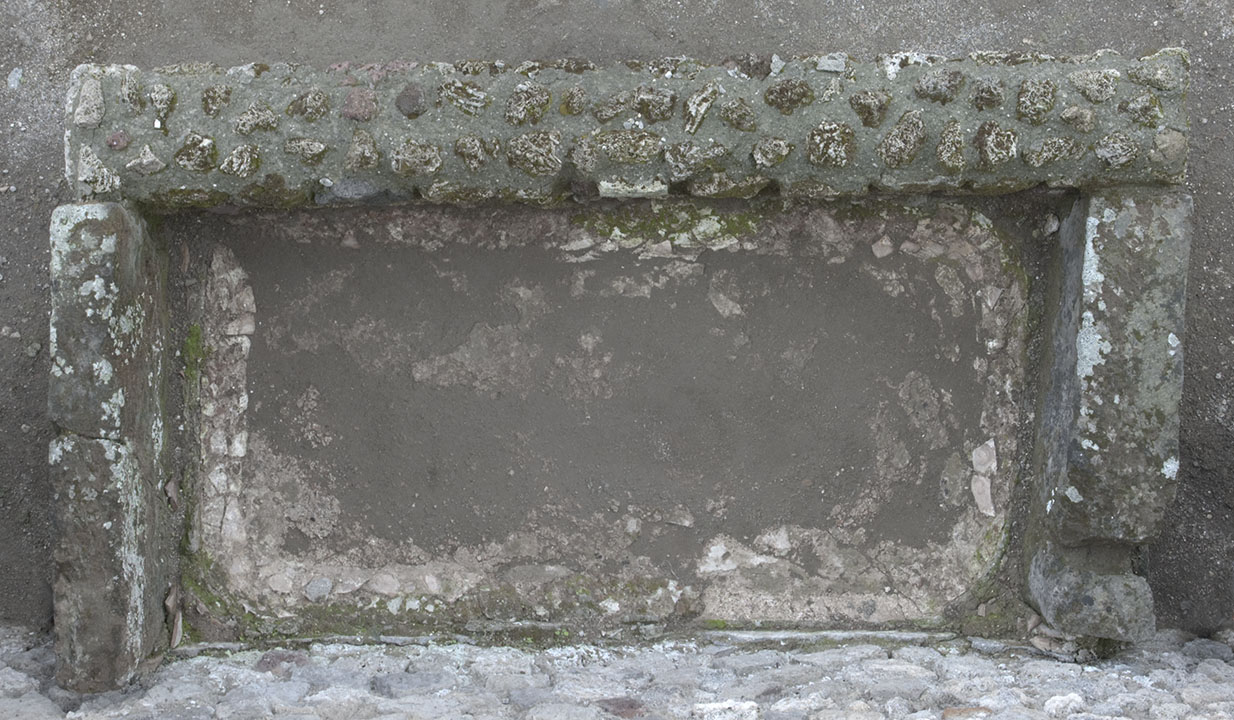Basin
Description
Henrik Boman & Monika Nilsson
The basin is a late addition to the atrium since the pattern of the mosaic floor continues under the structure and its rear wall rests onto the plaster of the south wall of the building.
In connection with the installation of the two ovens in the rear of the house, the basin was constructed by the southern wall. The basin has an outlet directly onto the floor which, possibly, originally was equipped with a conduit leading into the impluvium.
The basin is constructed with one large orthostat at each short end. The blocks are presumable re-used since there are cuttings which are otherwise difficult to explain. There is, however, a slight possibility that there were installations on one or both sides of the basin which today are completely destroyed.
Mau made no comments on the basin, except for the mention of red-coated plaster.
The interior of the structure is dressed with plaster and pieces of broken pottery in at least two, but presumably three layers. The first layer is concave around the lower part of the basin, the second convex. Whether these are two distinctively different phases or the result of a construction sequence is not possible to say today.
The first layer of plaster continues towards the south wall, it seems however to be a different plaster than the wall plaster. The second layer might be the cocciopesto bedding for the basin. On top of these two layers there seems to be a third, thin layer which covered them all, presumably a fine plaster type.
The same mortar used in the basin is also found in the pluteus of the viridarium.
The basin was reconstructed in 2008, concealing the ancient remains in modern stone work and mortar.

